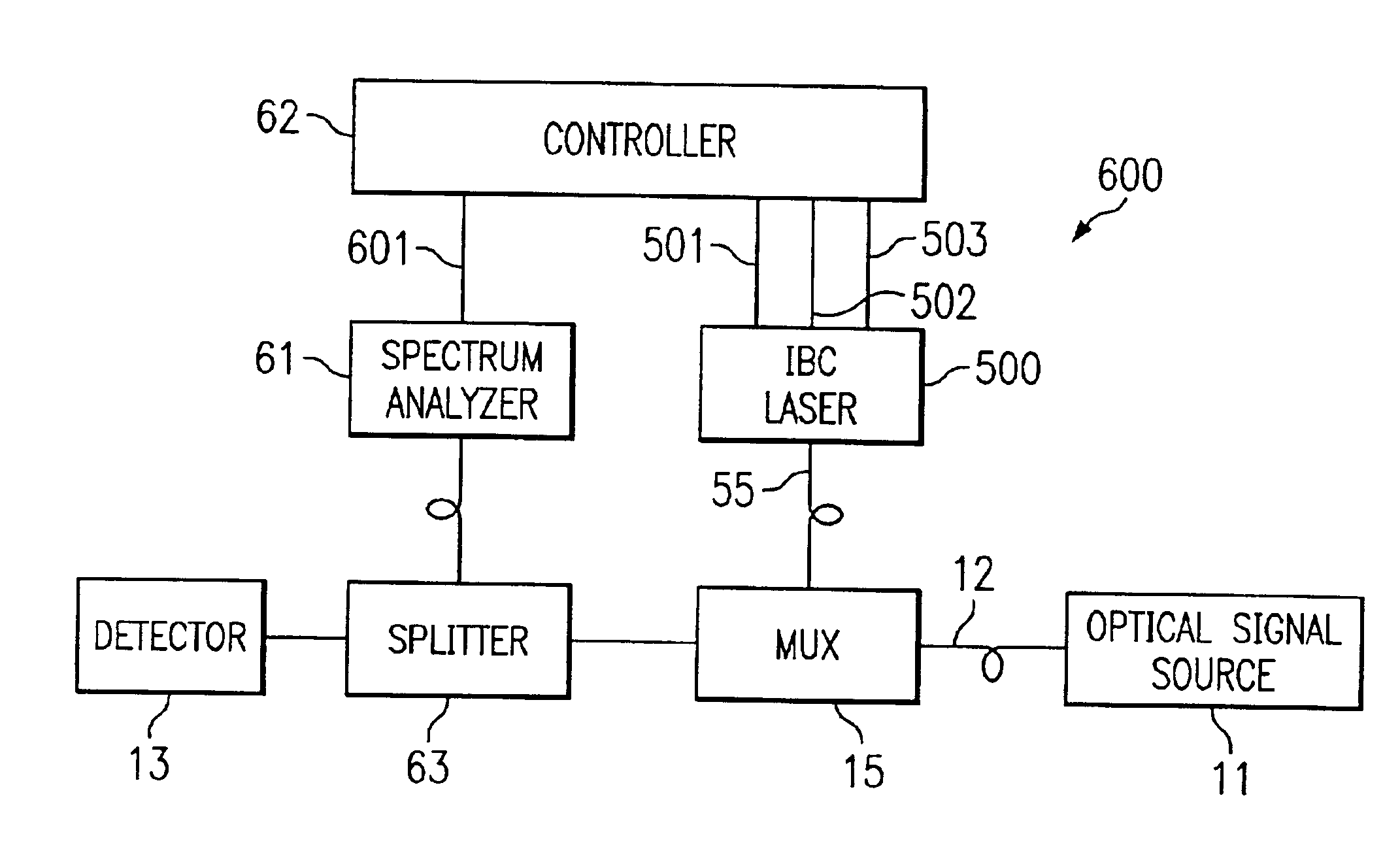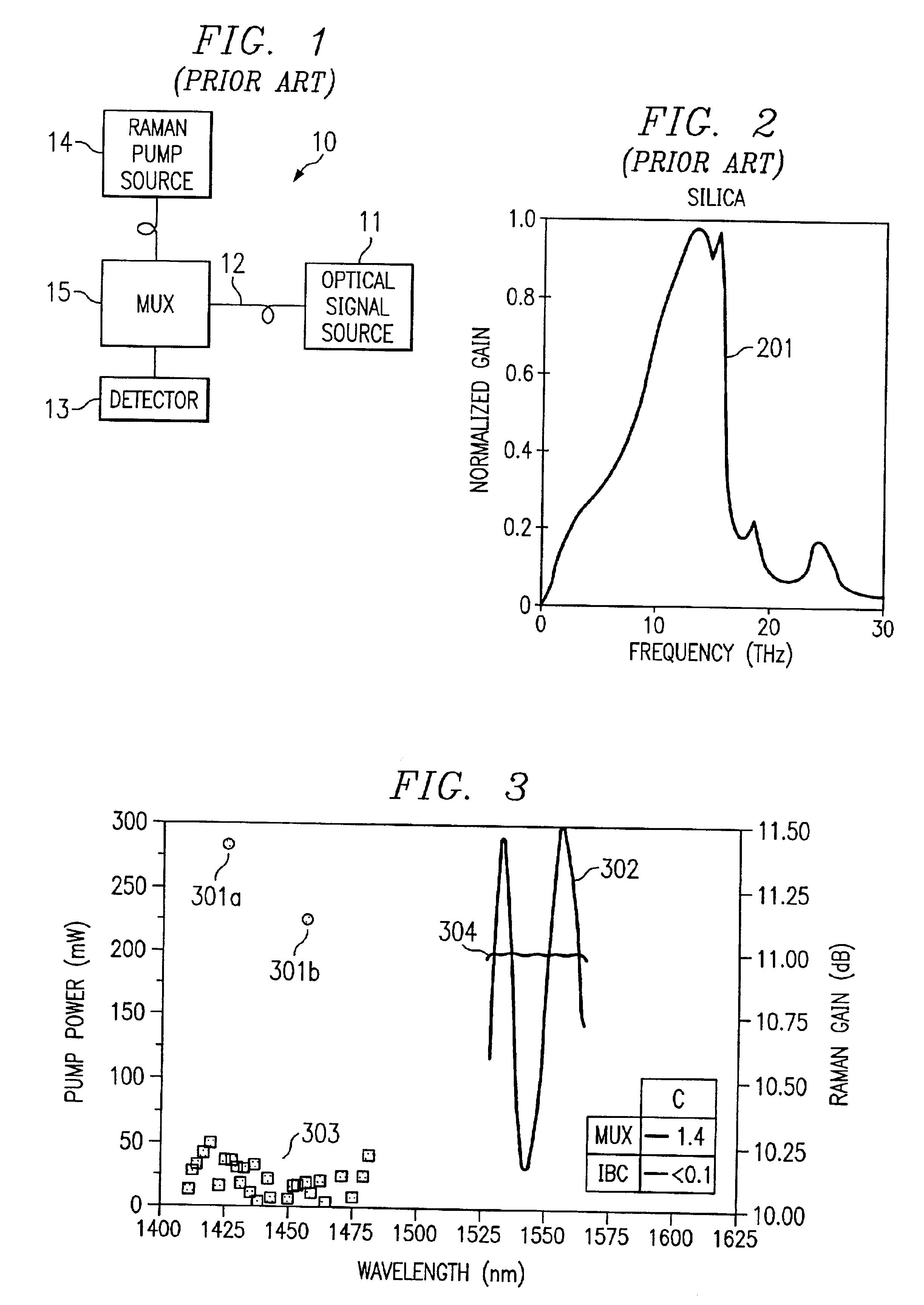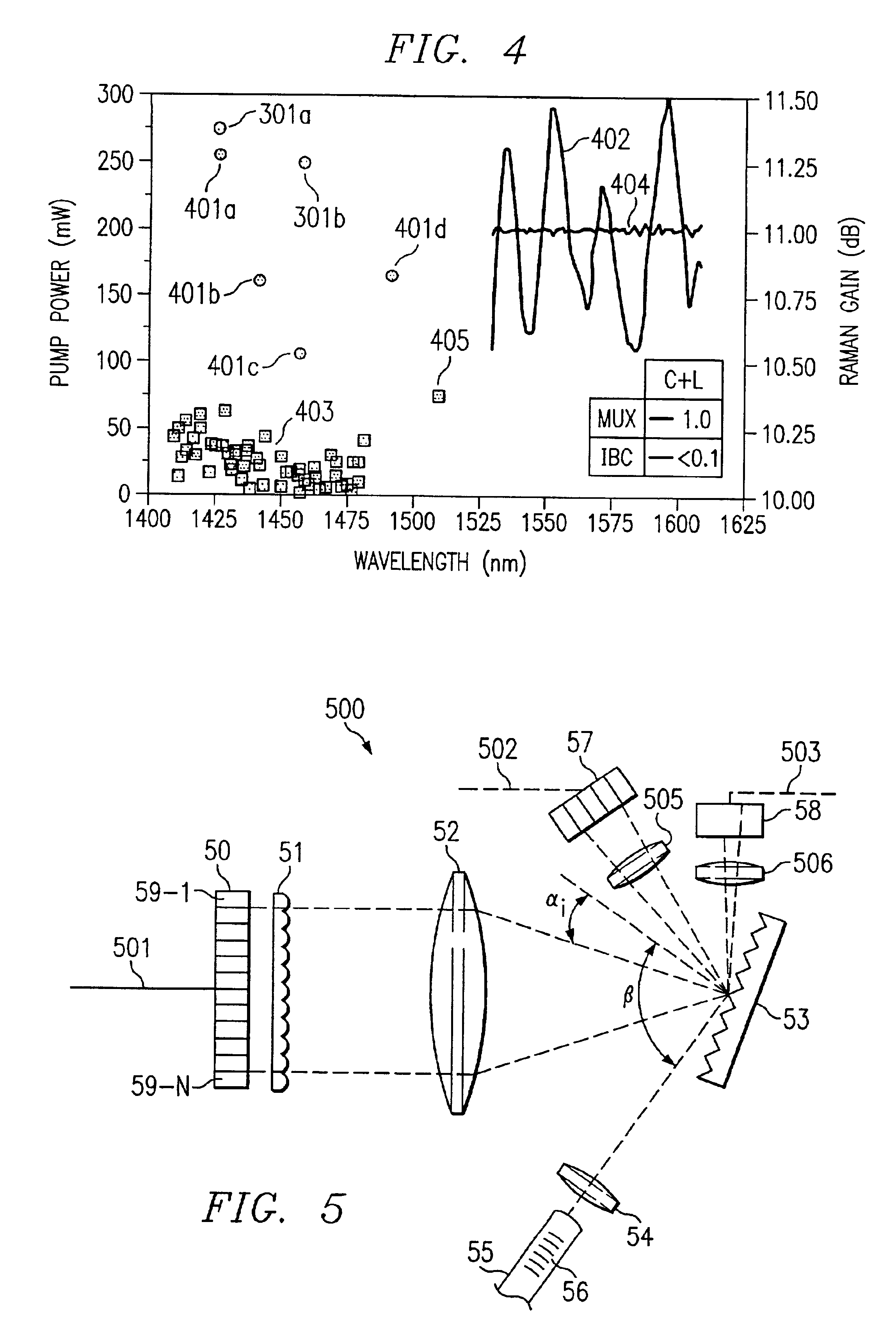Dynamically spectrally tailored raman pump laser
a raman pump and laser technology, applied in the direction of lasers, semiconductor laser arrangements, semiconductor lasers, etc., can solve the problems of non-optimal solution, scattered, or otherwise lost power transfer to the fiber, and the raman amplifiers have not attracted much commercial interest, so as to facilitate the adjustment of the output power of the emitter and achieve the desired gain
- Summary
- Abstract
- Description
- Claims
- Application Information
AI Technical Summary
Benefits of technology
Problems solved by technology
Method used
Image
Examples
Embodiment Construction
[0022]As discussed in Pump Interactions in 100-nm Bandwidth Raman Amplifier, H. Kidorf et al., IEEE Photonics Technology Letters, Vol. 11, No. 5, May 1999, FIG. 2 depicts Raman gain profile 201 in fused silica. Raman gain profile 201 depicts the gain produced by a spectrally limited source (a pump wavelength of 1 micron). The peak of the Raman gain profile is shifted to the red side of the pump wavelength by the Stokes shift which is approximately 13 THz. This attribute of Raman gain profile 101 causes the Raman process to most strongly amplify wavelengths that are longer than the pump center wavelength.
[0023]It shall be appreciated that a spectrally flat Raman pump will not generate spectrally flat Raman gain. This phenomenon is caused by pump-pump interactions or self-amplification. Self-amplification causes red components (longer wavelengths) of the Raman pump to be amplified by blue components (shorter wavelengths) of the Raman pump. This, in turn, causes greater Raman gain at t...
PUM
 Login to View More
Login to View More Abstract
Description
Claims
Application Information
 Login to View More
Login to View More - R&D
- Intellectual Property
- Life Sciences
- Materials
- Tech Scout
- Unparalleled Data Quality
- Higher Quality Content
- 60% Fewer Hallucinations
Browse by: Latest US Patents, China's latest patents, Technical Efficacy Thesaurus, Application Domain, Technology Topic, Popular Technical Reports.
© 2025 PatSnap. All rights reserved.Legal|Privacy policy|Modern Slavery Act Transparency Statement|Sitemap|About US| Contact US: help@patsnap.com



